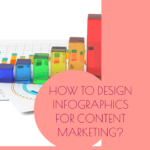How to design a visually appealing business card?
In today’s digital age, where first impressions matter more than ever, a well-designed business card remains an essential tool for making a lasting impression on potential clients, partners, and colleagues. A visually appealing business card can effectively convey your brand identity, professionalism, and creativity, setting you apart from the competition.
The Essence of Visual Appeal: Understanding the Principles of Design
Visual appeal is not merely about aesthetics; it’s about effectively communicating your message through the strategic use of design elements. When creating a business card, it’s crucial to consider the following principles:
- Balance: A balanced design creates a sense of harmony and visual equilibrium. It involves distributing elements evenly or using contrast to create a sense of stability.
- Contrast: Contrast adds visual interest and emphasizes certain elements. It can be achieved through variations in color, size, or weight.
- Emphasis: Emphasis draws attention to the most important information on the card. It can be achieved through size, color, or placement.
- Hierarchy: Hierarchy organizes information in a way that makes it easy for the viewer to understand. It involves using different sizes, weights, or colors to differentiate between primary and secondary information.
- Proportion: Proportion refers to the relationship between the sizes of different elements on the card. It ensures that elements are visually harmonious and scaled appropriately.
- Repetition: Repetition creates a sense of unity and rhythm by using the same element multiple times. It can be used to reinforce brand identity or create a visually appealing pattern.
- Space: Space is the area around and between elements on the card. It provides visual breathing room and prevents the design from appearing cluttered.
- Variety: Variety introduces visual interest by using different colors, shapes, or sizes. It helps to prevent the design from becoming monotonous.
- Unity: Unity ensures that all elements of the design work together cohesively to create a unified whole. It involves using consistent colors, fonts, and styles.
Crafting a Visually Appealing Business Card: A Practical Guide
Armed with the principles of design, let’s delve into the practical steps of crafting a visually appealing business card:
1. Define Your Brand Identity: Before embarking on the design process, it’s essential to have a clear understanding of your brand identity. This encompasses your brand’s core values, personality, and target audience.
2. Choose a Suitable Size and Shape: The traditional business card size is 3.5 inches by 2 inches, but there are also many creative alternatives, such as square or rounded-corner cards. Consider your brand identity and target audience when making your choice.
3. Select a Color Palette: Color choice plays a crucial role in conveying your brand message and personality. Use colors that align with your brand identity and appeal to your target audience. Consider color psychology and the emotional impact of different colors.
4. Utilize Typography Effectively: Typography is the art of selecting and arranging fonts. Choose fonts that complement your brand identity and are easy to read. Avoid using too many different fonts, as this can make the design appear cluttered.
5. Prioritize Clarity and Readability: The primary purpose of a business card is to provide essential contact information. Ensure that the text is easily readable and stands out against the background.
6. Use Images and Graphics Strategically: Images and graphics can add visual interest and reinforce brand identity. Use high-quality images that are relevant to your business and complement the overall design.
7. Maintain a Consistent Style: Consistency in colors, fonts, and layout creates a sense of professionalism and cohesion.
8. Consider Special Finishes: Special finishes, such as embossing, foil stamping, or spot UV, can add a touch of luxury and sophistication.
9. Seek Feedback and Iterate: Gather feedback from colleagues, potential clients, or design professionals. Iterate on your design based on feedback to create a visually appealing and effective business card.
Conclusion: The Lasting Impact of a Well-Designed Business Card
A visually appealing business card is more than just a piece of paper; it’s a tangible representation of your brand and a powerful tool for making a lasting impression. By understanding the principles of design and following these practical steps, you can create a business card that not only looks great but also effectively communicates your brand’s essence.








